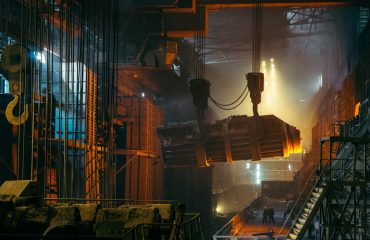body { font-family: sans-serif; line-height: 1.6; }
h1, h2, h3 { color: #333; }
h1 { font-size: 2.5em; }
h2 { font-size: 2em; }
h3 { font-size: 1.5em; }
Steel is a ubiquitous material in modern civil engineering, forming the backbone of skyscrapers, bridges, and countless other structures. A thorough understanding of steel’s properties, design principles, and construction techniques is paramount for any aspiring or practicing civil engineer. This comprehensive guide explores the essential aspects of steel training for civil engineers, equipping you with the knowledge to confidently tackle steel-related projects.
Understanding Steel Properties and Behavior
Before diving into design, a fundamental understanding of steel’s mechanical properties is crucial. This includes its yield strength, tensile strength, ultimate strength, and ductility. Steel training should cover different grades of steel, their chemical compositions, and how these factors influence the material’s behavior under various loading conditions. Topics like stress-strain curves, elastic and plastic deformation, and the effects of temperature are also essential. Furthermore, the training should address the impact of corrosion on steel structures and the methods used to mitigate it, such as galvanization and protective coatings. Learning about different steel failure mechanisms, including fatigue and brittle fracture, is also vital for safe and reliable design.
Steel Design Principles and Codes
Steel design involves applying engineering principles to create safe and efficient steel structures. Training in this area should cover the relevant design codes and standards, such as AISC (American Institute of Steel Construction) or Eurocodes, which provide guidelines for structural design, detailing, and fabrication. Engineers need to learn how to perform load calculations, select appropriate steel sections, and design connections to ensure structural integrity. Understanding concepts like bending moments, shear forces, and axial loads is essential, along with the ability to use design software to analyze and optimize steel structures. The training should also include an understanding of stability analysis, addressing issues like buckling and lateral-torsional buckling.
Steel Fabrication and Construction Techniques
Theoretical knowledge is only half the battle; understanding the practical aspects of steel fabrication and construction is equally important. Steel training should incorporate hands-on experience or detailed simulations of various fabrication techniques, including welding, bolting, and riveting. Learning about different welding processes (e.g., SMAW, GMAW, FCAW) and their respective strengths and limitations is crucial. The training should also cover quality control procedures, ensuring that the fabricated steel components meet the specified design requirements. Understanding the erection process, including the sequence of operations, safety protocols, and the use of specialized equipment, is essential for successful project completion.
Advanced Steel Design Concepts: Connections and Detailing
Steel connections are critical elements that transfer loads between different steel members. Training should cover various connection types, such as bolted connections, welded connections, and moment connections, along with their design considerations and capacity calculations. Detailed understanding of connection behavior under different loading scenarios is vital. Furthermore, proper detailing of steel structures is crucial for efficient fabrication and construction. This includes creating accurate drawings that clearly indicate dimensions, section properties, connection details, and fabrication tolerances. The training should encompass the use of Computer-Aided Design (CAD) software for creating detailed steel structural drawings.
Sustainable Steel Design and Practices
In an era of increasing environmental awareness, sustainable design practices are gaining significant importance. Steel training should include a module on sustainable steel design, covering topics such as life-cycle assessment (LCA), the use of recycled steel, and the reduction of carbon emissions during the manufacturing and construction processes. Engineers should be aware of the environmental impact of their design choices and strive to minimize the overall environmental footprint of steel structures. This might involve exploring alternative steel grades with lower carbon footprints or optimizing designs to reduce material usage.
By mastering these aspects of steel training, civil engineers can significantly enhance their capabilities and contribute to the creation of safe, efficient, and sustainable steel structures. Continual professional development and staying updated with the latest advancements in steel technology are vital for maintaining a high level of competence in this crucial field.
SEO-Friendly Tags:
- Steel Training for Civil Engineers
- Steel Design and Construction
- Structural Steel Engineering
- AISC Steel Design Manual
- Steel Fabrication Techniques




